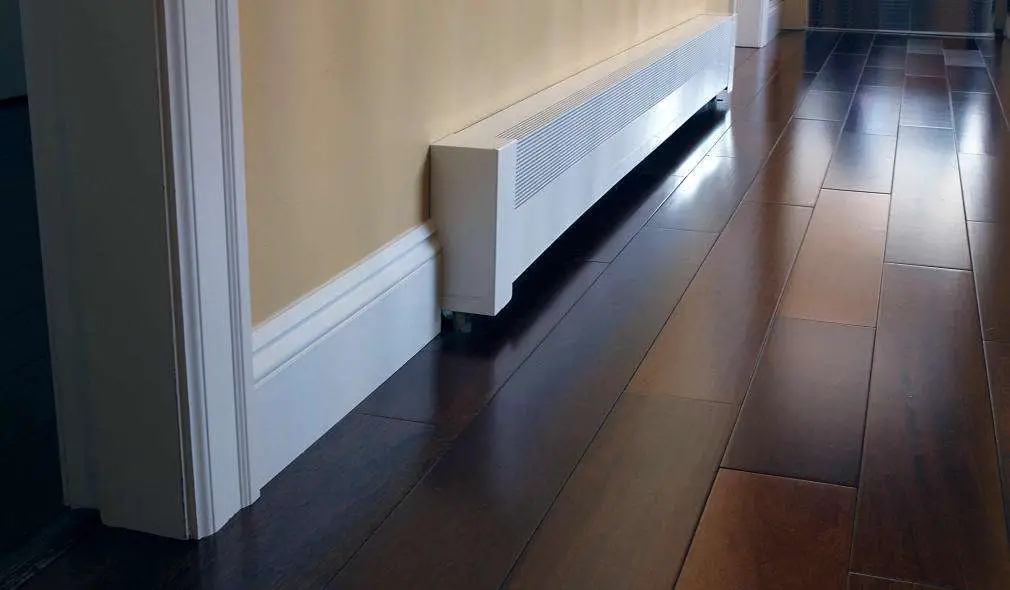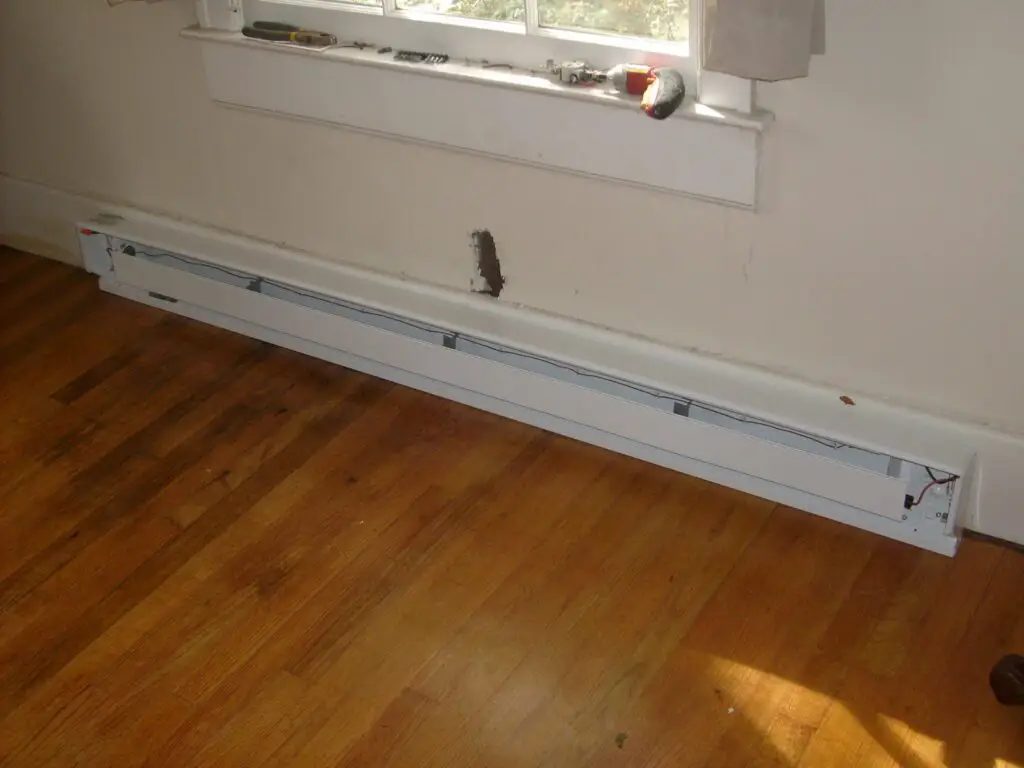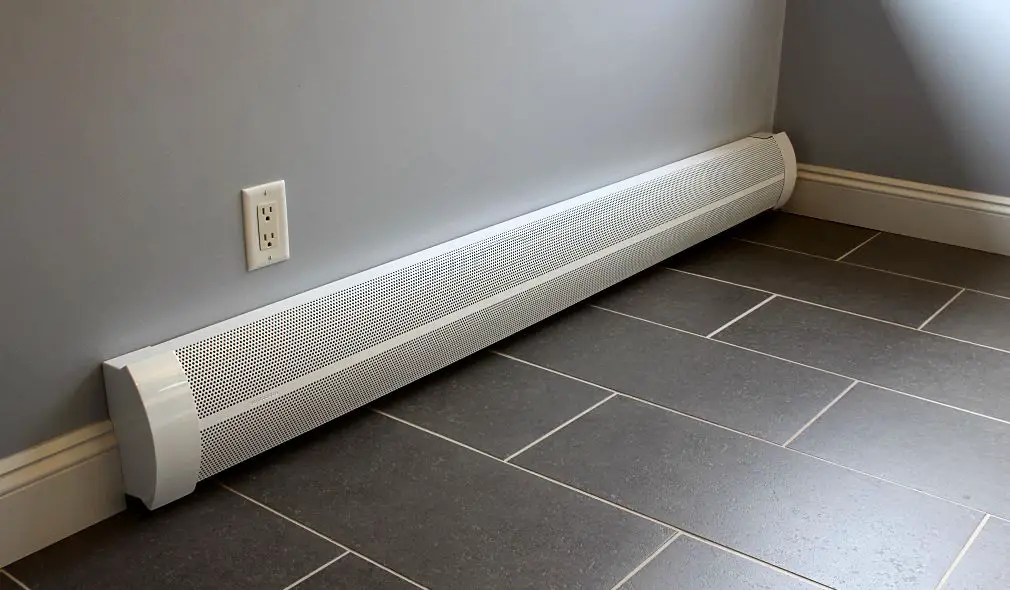How Hot Do Baseboard Heaters Get
Introduction
How Hot Do Baseboard Heaters Get: Baseboard heaters are a popular choice for heating homes and offices due to their efficiency and affordability. These heating units are typically installed along the baseboards of a room and provide a steady source of warmth during the colder months. However, many people wonder just how hot baseboard heaters can get and if they pose any safety risks.
Baseboard heaters work by using electric resistance to generate heat. When electricity passes through the heating element, it produces heat that is then transferred to the surrounding air. The temperature at which baseboard heaters operate can vary depending on the specific model and settings. Generally, baseboard heaters can reach surface temperatures of around 150 to 200 degrees Fahrenheit.
It is important to note that while wire baseboard heaters can get quite hot, they are designed with safety features to prevent any accidents or injuries. Most modern baseboard heaters are equipped with automatic shut-off switches that activate if the unit overheats or if an object is placed too close to the heater. These safety mechanisms help to minimize the risk of fire or burns.
When using baseboard heaters, it is crucial to follow the manufacturer’s instructions and guidelines to ensure safe operation. It is recommended to keep flammable objects, such as curtains or furniture, at least 12 inches away from the heater to prevent any potential fire hazards. Additionally, it is important to regularly inspect the heater for any signs of damage or malfunction and to have it professionally serviced if necessary.

Are baseboard heaters hot to the touch?
Kids who are crawling or walking can get burned by hot floor heaters. This is why a baseboard heater cover is the first thing that parents should do to keep their kids safe.
People like baseboard heaters in their homes and businesses because they work well and don’t cost a lot. Some people want to know if these heaters are hot. People with pets and young families need to know this. This post will talk about safety rules and check floor heaters for heat.
Baseboard convection heaters warm up rooms. Electric ones are often hidden in wall panels. After warming up, the heater heats the room, making it feel nice. Keep in mind that floor heaters get hot.
Baseboard heaters are safe even when they are hot. Most modern baseboard heaters have covers or grilles that guard the hot source. Protective walls keep people from getting burned or hurt. But if you use the heating area for a long time, it can get warmer.
Baseboard heaters should not be used near pets or children without being careful. To avoid getting burned, keep furniture and curtains away from heaters. To avoid touching the heater by mistake, put up a heater guard. Even though baseboard heaters are hot, they have safety features that keep you from getting burned.
Will a baseboard heater heat a room?
Baseboard heaters can provide enough heating capacity to comfortably heat a room that is less than 200 sq. ft. In larger rooms you can use more than one unit to boost their effectiveness, but it’s usually better to consider central heating in homes with these types of rooms.
Yes, a baseboard heater can effectively heat a room. Baseboard heaters are a popular choice for heating individual rooms or small spaces. They are designed to be installed along the baseboard of a wall and provide consistent heat throughout the room. These heaters work by using convection to circulate warm air, creating a comfortable and cozy environment.
One of the advantages of baseboard heaters is their ability to heat a room quickly. Unlike central heating systems that take time to warm up an entire house, baseboard heaters can provide almost instant heat. This is especially beneficial in rooms that are used infrequently or for short periods of time, such as guest rooms or home offices.
Is baseboard heat safe?
Generally speaking, electric baseboard heaters are safe when installed correctly and kept far away from any flammable materials. Exercise caution if you have children or pets in a home with electric baseboard heat. These become much hotter to the touch than hydronic and burns can result.
Baseboard heat is a common heating system found in many homes. It consists of a series of heating units installed along the baseboards of each room, which radiate heat into the space. While baseboard heat is generally considered safe, there are a few factors to consider when it comes to its safety.
Firstly, baseboard heaters operate at relatively low temperatures compared to other heating systems, such as forced-air furnaces. This means that the risk of burns or accidental contact with hot surfaces is significantly reduced. The heating elements of baseboard heaters are typically enclosed within a metal housing, which further minimizes the risk of direct contact with the heat source.
Additionally, baseboard heaters do not rely on combustion to generate heat, unlike gas or oil furnaces. This eliminates the risk of carbon monoxide poisoning or other harmful emissions associated with burning fossil fuels. Baseboard heaters are typically electrically powered, which makes them a cleaner and safer option in terms of indoor air quality..
Can baseboard heaters heat an entire house?
Electric heat in the baseboards
Even though these can be put in every room, electric baseboards are generally only used to heat certain rooms when they need it.
People often use baseboard heaters to heat specific rooms, but can they heat the whole house? The answer depends on the size of the house, the insulation, and how well the floor heater works.
Electric resistance is what makes baseboard heaters heat. They are built into the walls of rooms and use convection to move warm air around. Baseboard heaters can heat a room, but they might not be the best or most cost-effective way to heat a whole house.
Baseboard heaters may or may not be able to heat the whole house, depending on how big it is. A small, well-insulated house might stay warm with baseboard heaters. In bigger homes or ones that don’t have enough insulation, heaters may have trouble keeping up with demand.
Another thing is how efficient the baseboard heater is. It’s possible that older models use more energy and heat less efficiently. You should pick baseboard heaters that are of good quality, use little energy, and fit the room.
Along with baseboard heaters, a stove or central heating system is often a good idea. This can make the house warmer in the winter and help the heat spread out better.
What are the disadvantages of baseboard heaters?
Baseboard Heater Cons
Expensive to operate: Expect higher utility bills than with forced air through an HVAC system. Safety hazard: Electric baseboard heaters can get extremely hot. Without proper maintenance and care, they can become a fire hazard. To prevent fire, keep furniture and curtains at least six inches away.
Baseboard heaters are a popular choice for heating homes and offices due to their affordability and ease of installation. However, like any heating system, they also come with their fair share of disadvantages. It is important to consider these drawbacks before deciding to install baseboard heaters in your space.
One of the main disadvantages of baseboard heaters is their lack of efficiency. Unlike central heating systems, which distribute heat evenly throughout a space, baseboard heaters only provide heat in the area directly in front of them. This means that other parts of the room may remain cold, resulting in uneven heating and potential discomfort for occupants. Additionally, baseboard heaters are known for their slow heating capabilities, which can be frustrating during colder months when quick warmth is desired.
Another disadvantage of baseboard heaters is their reliance on electricity. While this may not be an issue for some, it can be a significant drawback for those living in areas with high electricity costs. Baseboard heaters can consume a considerable amount of energy, leading to higher utility bills. Additionally, if there is a power outage, baseboard heaters will not function, leaving occupants without a source of heat.
Are baseboard heaters capable of producing high levels of heat?
Baseboard heaters are indeed capable of producing high levels of heat. These heating units are designed to efficiently and effectively heat a room or space. The maximum temperature that baseboard heaters can reach depends on various factors such as the wattage of the heater, the length of the heating element, and the size of the room being heated.
Baseboard heaters typically operate at temperatures ranging from 150 to 200 degrees Fahrenheit. This temperature range allows them to provide a consistent and comfortable level of heat without posing a safety risk. However, it is important to note that baseboard heaters should always be used with caution and proper safety measures should be followed to prevent any accidents or overheating.
Overall, baseboard heaters are capable of producing high levels of heat, making them a reliable and efficient heating option for many homes and spaces. With their ability to reach temperatures within a safe range, they can effectively warm up a room and provide a comfortable environment during colder months.
How hot can baseboard heaters become during operation?
Baseboard heaters can reach temperatures of up to 150 to 200 degrees Fahrenheit during operation. This high temperature is necessary for them to effectively heat a room. However, it is important to note that the surface temperature of the heater itself may not always be an accurate representation of the actual air temperature in the room. The air temperature can vary depending on factors such as insulation, room size, and heat loss.
It is crucial to exercise caution when using baseboard heaters, especially if you have young children or pets in your home. The high temperatures they can reach can pose a burn risk if touched directly. To prevent accidents, it is recommended to keep flammable objects at a safe distance from the heater and install a barrier or cover to prevent accidental contact.
Is there a specific temperature range that baseboard heaters typically reach?
Baseboard heaters typically have a specific temperature range that they can reach during operation. The maximum temperature that baseboard heaters can reach depends on various factors such as the wattage of the heater, the size of the room, and the insulation of the space. However, in general, baseboard heaters can reach temperatures between 150 to 200 degrees Fahrenheit.
It is important to note that baseboard heaters are designed to operate within this temperature range to provide efficient and effective heating. The high temperatures are necessary to ensure that the heat is distributed evenly throughout the room. However, it is crucial to exercise caution when using baseboard heaters to prevent any accidents or burns. It is recommended to keep flammable objects away from the heaters and to never touch the surface of the heater when it is in operation.
What is the upper limit of heat output for baseboard heaters?
Baseboard heaters work well, but they can only heat so much. Depending on the type and maker, baseboard heaters can get as hot as 150 to 200 degrees Fahrenheit. Baseboard heaters can warm a room easily in the winter because it is warm outside.
Baseboard heaters heat very well, are safe, and get very hot. Thermostats and other safety features turn heaters off if they get too hot. Avoids heaters getting too hot and starting fires.
Follow the directions that came with the floor heater to use it safely. Keeping the heater clean and free of dust and things that could catch fire is part of this. This makes the floor heater work better and keeps the house safer.

Conclusion
Baseboard heaters can reach high temperatures, making them an effective heating option for many homes. The exact temperature that baseboard heaters can reach depends on several factors, including the wattage of the heater and the size of the room being heated. However, it is not uncommon for baseboard heaters to reach temperatures of 150 to 200 degrees Fahrenheit.
It is important to note that while electric baseboard heaters can get hot, they are designed to be safe for use in homes. They are equipped with safety features such as thermal cutoff switches that automatically shut off the heater if it gets too hot. This helps to prevent overheating and reduce the risk of fire.
When using baseboard heaters, it is important to exercise caution and follow safety guidelines. Keep flammable materials such as curtains, furniture, and rugs at a safe distance from the heater to prevent the risk of fire. Additionally, it is recommended to never cover or block the heater with any objects, as this can restrict airflow and cause the heater to overheat.
Baseboard heaters can get hot, reaching temperatures of 150 to 200 degrees Fahrenheit. However, they are designed with safety features to prevent overheating and reduce the risk of fire. By following safety guidelines and exercising caution, baseboard heaters can provide efficient and effective heating for your home.








